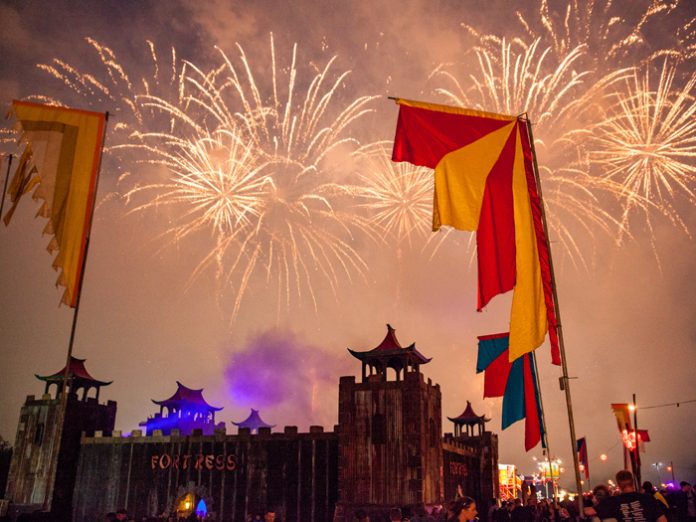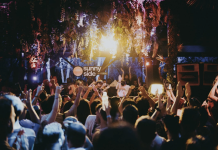Beat-Herder will return to Lancashire from July 14 – 16, once again aiming to unite the tribes of contemporary dance music via its presentation of innumerable sub-genres across 21 stages. With a personal touch evident across every aspect of its organisation, construction and activities, as well as an atmosphere characterised by exploration and intimacy, the festival has become one of the nation’s most beloved over the course of its 12-year history.
Insights spoke with Jamie Foxon, Beat-Herder’s Event Manager, about the festival’s lovingly handcrafted set design, its DIY origins, and propensity for the theatrical.
Festival Insights: Could you tell us a little about your professional background and how you came to work with the rest of the Beat Herder family?
Jamie Foxon: From a young age I worked with a set of roofers and builders who introduced me to the party scene, and through festivals, raves and parties, quickly got a taste for endless beats and dancing in random outdoor places. It was inspiring how a generator, a couple of decks, a crude sound system and loads of ace people could be the source of such freedom and excitement.
I guess this fascination with raves and putting on illegal festivals is where we cut our teeth. As a small team of six – who have been mates since school – we have muddled our way along putting on Beat-Herder without an events degree amongst us. In short you can probably write our collective professional experience on the back of a Rizla (and not a kingsize). Essentially, all we are is straight talking, practical hands-on types.
FI: The festival originated as a free DIY party on the Northern moors in 2006. As it has grown, how have you managed to maintain the intimate, grassroots feel of its initial incarnation?
JF: Many of the venues and areas at Beat-Herder are hosted by ‘party’ people we have met along the way – so over 21 stages, there is obviously a strong sense of community which I guess transpires through the do. We have a real close knit build team too, known as the A team – mates we have worked who like a mission. My sister and the farmer’s wife cook for us, so we eat together, we argue, we stay up too late – all the things that bind a group together.
Beat-Herder remains intimate I think from the core. We answer every email and social media message pre-event, during and after. We try to give answers and explain the reasoning behind every manoeuvre and decision, just for transparency really. It gives our attendees, who we refer to as family, the feeling of ownership. They do own the festival really and we ask our family what they would like to see at Beat-Herder, what they would like to do, what they like, and what they don’t like.
FI: Beat Herder is renowned for its entirely handmade site, which is crafted from scratch using ‘unusual materials’. How big is the team you enlist to construct the festival’s 21 stages and set-pieces? Can you elaborate on the process of building the festival from the ground up?
JF: We have always said that Beat-Herder is built using rusty nails and old bits of timber, and it’s not far wrong. As a company we do not have massive budgets and so our approach to site build and stage design, venue interiors,and site art is very different to other events. We design with what we find, which can be a constraint on your imagination, but more often than not it allows you to be more wacky ‘cos the materials we build with are cheaper. We are also really really blessed in that we have a workshop and live in an area where there is some real talent, as well as a top notch structural engineer. Every idea, concept, and surrounding building at Beat-Herder starts around a table, covered in brown paper with a brew and fag.
FI: Speaking of the set design – are there any new areas for 2017, or any stages that you’ve modified? Do you have any personal favourites?
JF: For a long time there was an age-old festival argument that people of Beat-Herder, like other festivals, would just be happy in a big top or white marquee with some fancy lights and good billing, and I think over the past few years festivals have realised that people want to be wowed with more and more exciting takes on design.
Each year we try to build new exciting venues or revamp our existing ones. It’s hard to have a favourite venue to be honest – there are so many that we have invested huge amounts of time in, but probably it is the Church because of the sheer amount of detail. It looks like a church, it smells like a church, it has stained glass Beat-Herder windows, wooden benches with ‘Beat-Herder’ carved in, and it has real handbound hymn books. It’s crazy in that place. Another favourite of mine could be the hidden swimming pool, or maybe the fortress. I don’t know. There will be something new at Beat-Herder this year – but I can’t specify yet because we are still sketching up wacky stuff.
FI: You guys have won the UK Festival Awards’ Extra-Festival Activity trophy in the past, and it’s clear that Beat Herder focuses on the experiential just as much as the music. What kinds of non-music activities can attendees expect this year?
JF: Beat-Herder attendees can swim in the secret pool, be inked at the tattooist, they can bring their vinyl collection and DJ out of an old Austin Somerset, they can crawl through random tunnels and find secret venues, they can get a sauna, partake in Beat-Herder’s Got Talent, get a haircut, they can do some potato carving, take part in circus workshops, and witness the [apparently] biggest firework show in the North.
FI: With acts as eclectic as Sleaford Mods, Max Cooper, Toots and the Maytals, and Romare on the bill, it must result in a pretty diverse crowd. Is this approach to programming part of a conscious effort to represent and unite as many different music tribes as possible?
JF: You have hit the rusty nail right on the head.
FI: Fancy dress seems to be an integral part of the Beat Herder experience. Was this a staple from the beginning? Are there any other ways in which you try to enhance your fans’ senses of escapism and immersion?
JF: Parties for us have always been about dressing up and making that bit of effort and yes, from day one we have always had Saturday night characterised by fancy dress, themed with a letter. This year it’s the letter D. The lengths in which people go to as well is amazing; some of the costumes are so perverse in nature it takes a certain imagination to create.
It’s brilliant. Beat-Herder is about discovering stuff. It’s a small site with lots going on; venues are small to encourage people to get to know each other and it really works. Chuck in simple activities like pass the pass parcel, pillow bashing and the ubiquitous festival paint fight and people love it. It’s all those little things that get you away from the mundane nature of the daily grind.
FI: Is there anything else we should know about Beat Herder?
JF: We are currently looking into why so many people keep getting in touch to say that they either met at Beat-Herder, got engaged at Beat-Herder or they have conceived their first child here. We are thinking it might be the water.






